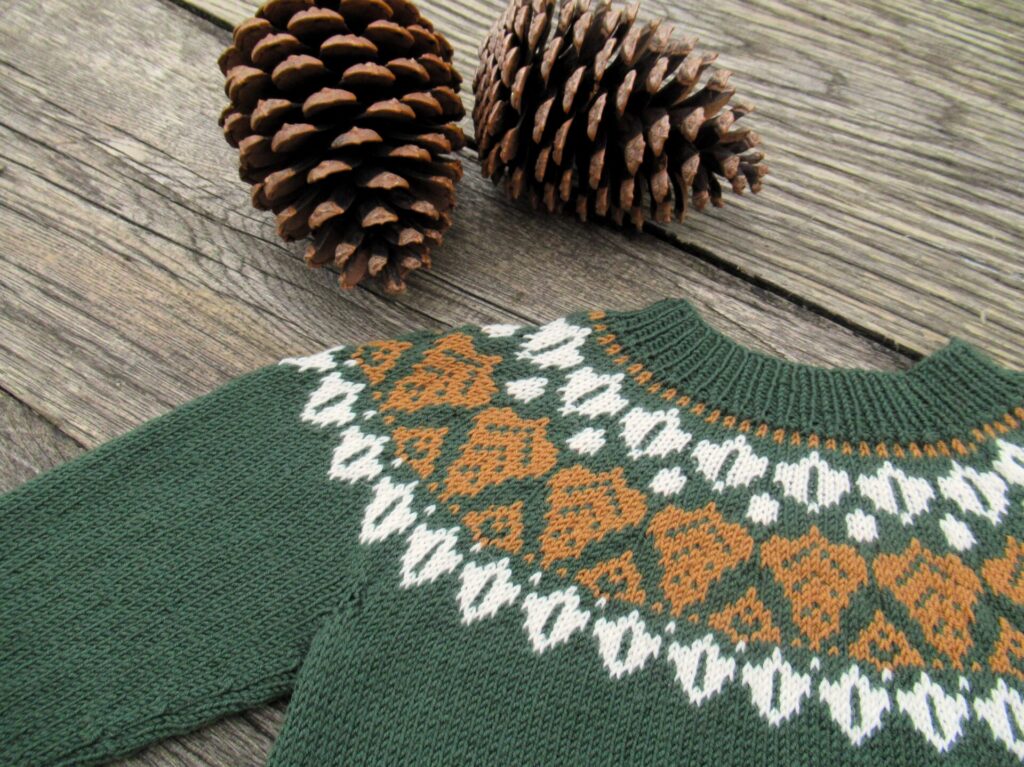
Hello!
Besides finishing this year’s first Norwegian knitting project, I’ve also read this year’s first Norwegian novel. I’ll tell you about both today, and in between I’ll take you on a walk among pine trees. It’s a long post and it’ll have to last you for two weeks, because my mother in law is moving house next week and I probably won’t have much time to write then. Let’s start with some Norwegian knitting.
Vinterkonglegenser
The pullover I’ve knit for our grandson is called Vinterkonglegenser, Norwegian for Winter Pine Cone Pullover. It is knit from the top down, starting with a round yoke with a lovely pine cone design. It never ceases to amaze me what a difference blocking makes. While I’m knitting lace or colourwork, I often think, ‘Meh, it doesn’t look attractive at all.’ But I know everything will be all right after blocking.
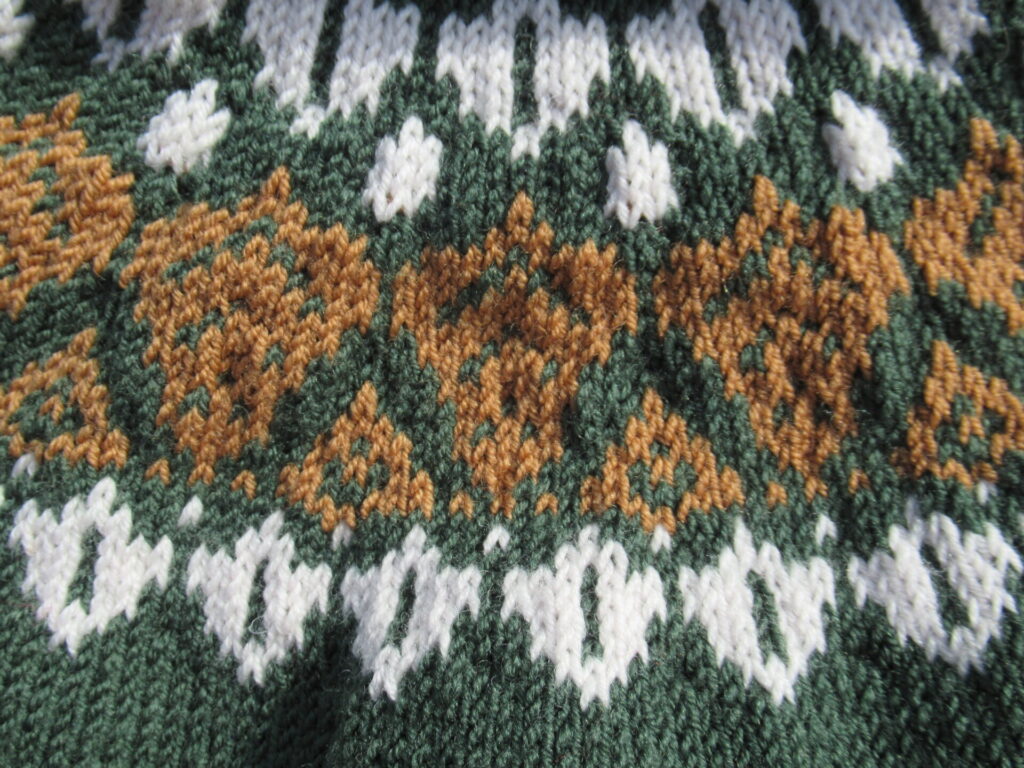
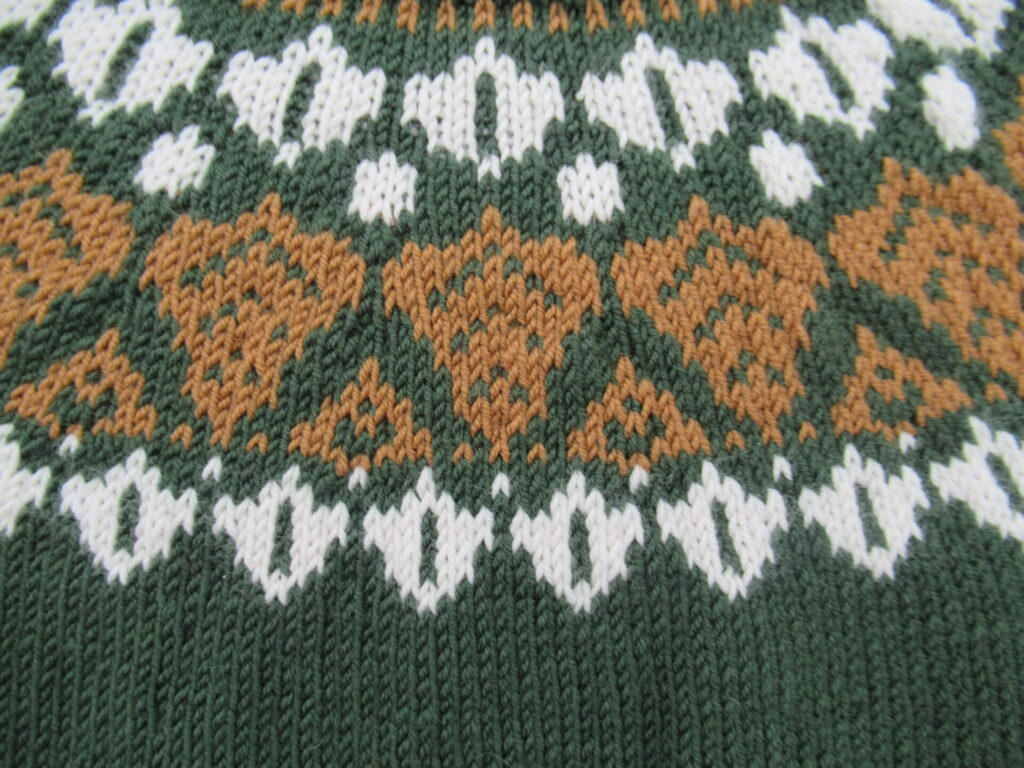
I didn’t use blocking wires or anything, so I’m not entirely sure I should call it blocking. What I did was soak the pullover in Eucalan for 20 minutes, spin-dry it and leave it to dry flat. Then I covered it with a clean, moist tea towel and hovered over it with the steam iron (on steam).
Instead of picking up underarm stitches, a few extra stitches are cast on, resulting in a hole that is closed later. Seaming it is a little more work, but makes for a nice and strong construction without any gaps.
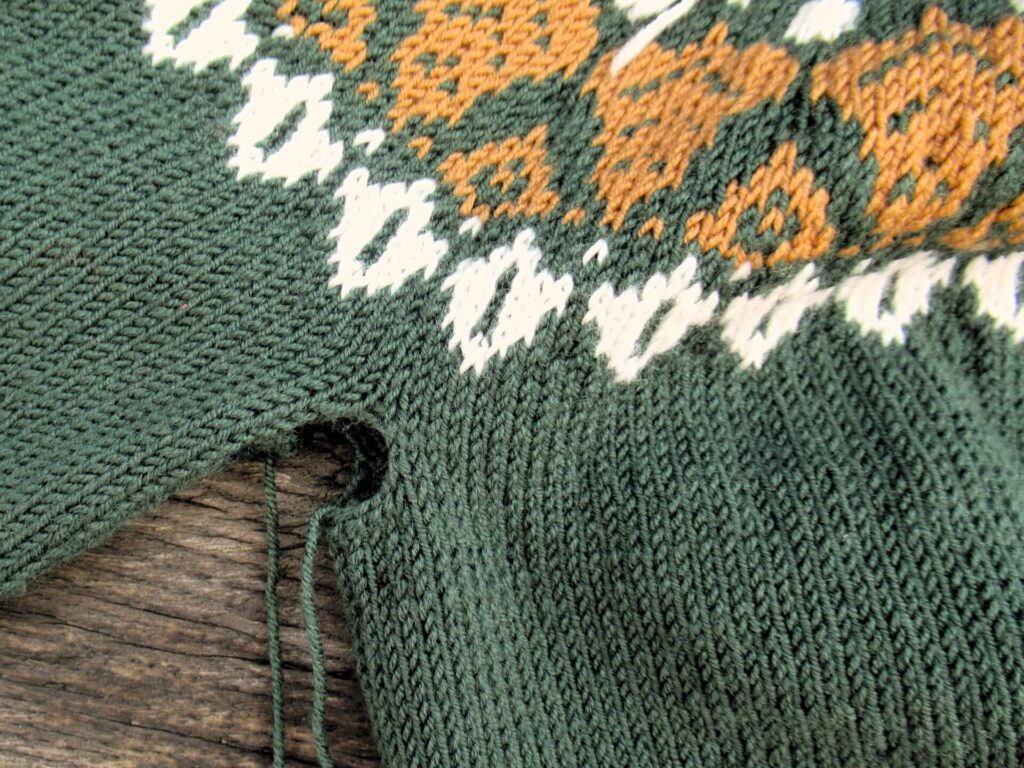
For the stranded colourwork, I keep one thread in my left hand and the other in my right. And my floats are never longer than 5 stitches. Maybe someday I’ll learn to photograph or film both of my hands so that I can show you the techniques I use.
For our not quite 2-year-old grandson, I knit the size for 6-year-olds, only making the body a little shorter. It turned out exactly the right size for him – weird! I’ll give you more info and links about the pattern and the knitting book it comes from at the end of the post. If you’re ever going to make anything from the book, do swatch and think carefully about the size you need to make first!
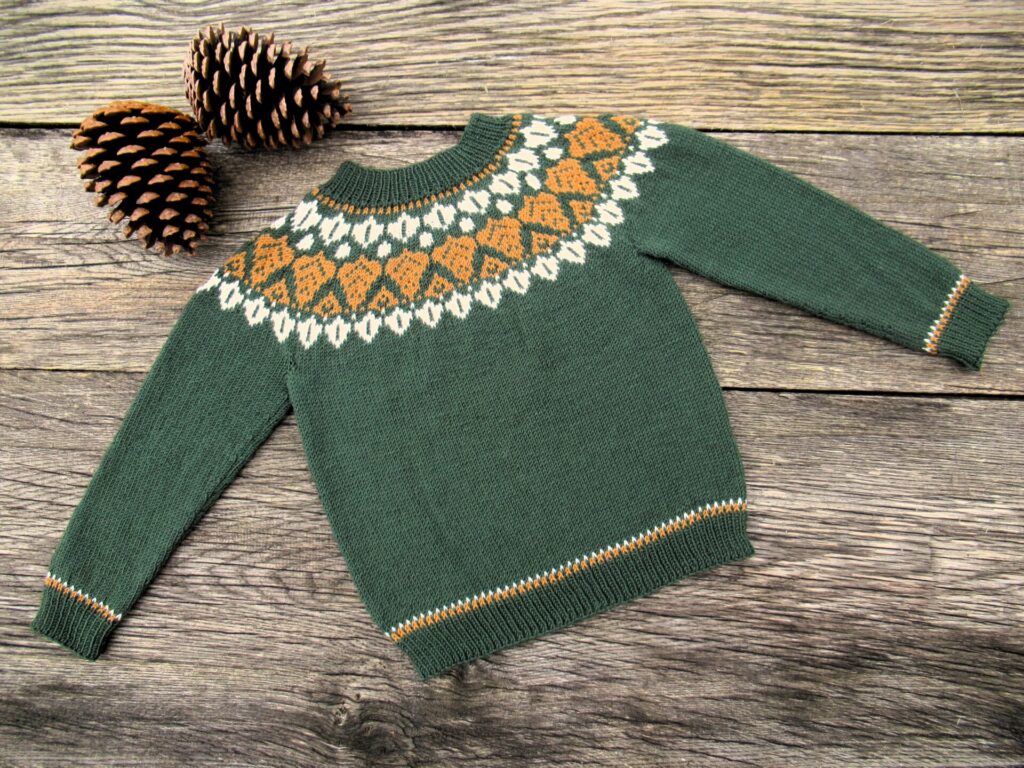
We brought the big pine cones in the pictures back from a summer holiday in France. They are from the maritime pines growing in the Mediterranean. Dutch pine cones are much smaller – here they are side by side.
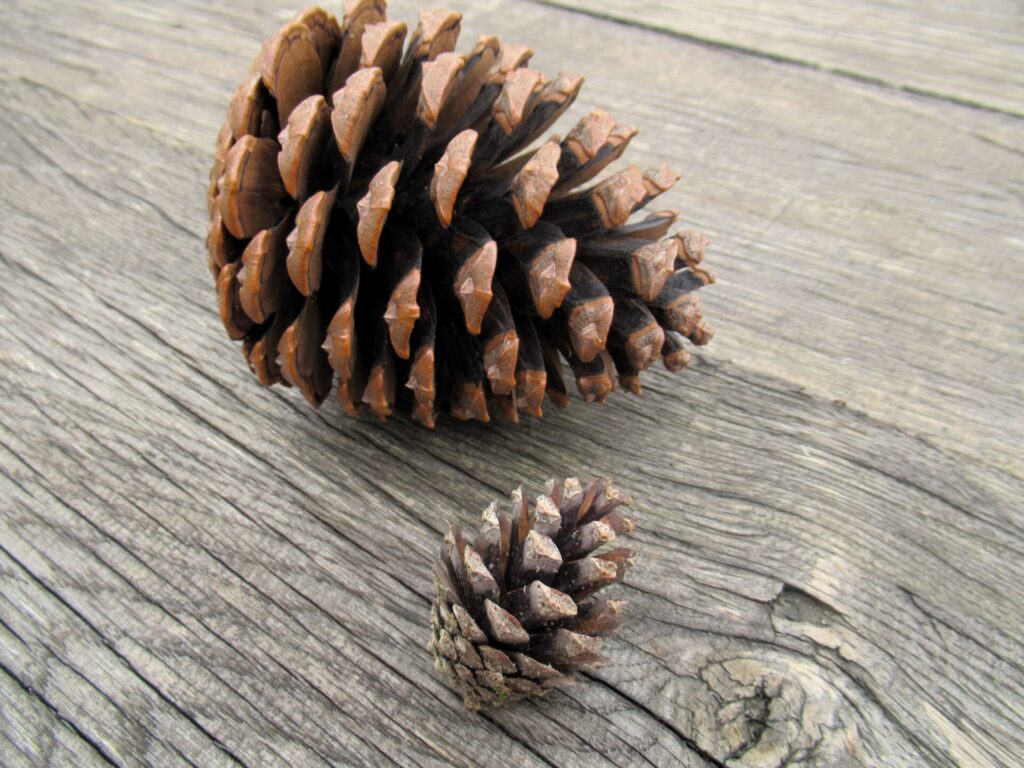
Pine tree walk
The pine trees around here are European red pines – the kind you may call Scots or Schotch pine. I’ve read that they can live up to 700 years in Scandinavia. Ours were planted here in the early 20th century, mainly to provide wood for the mining industry. Fortunately they are now left to grow in peace.
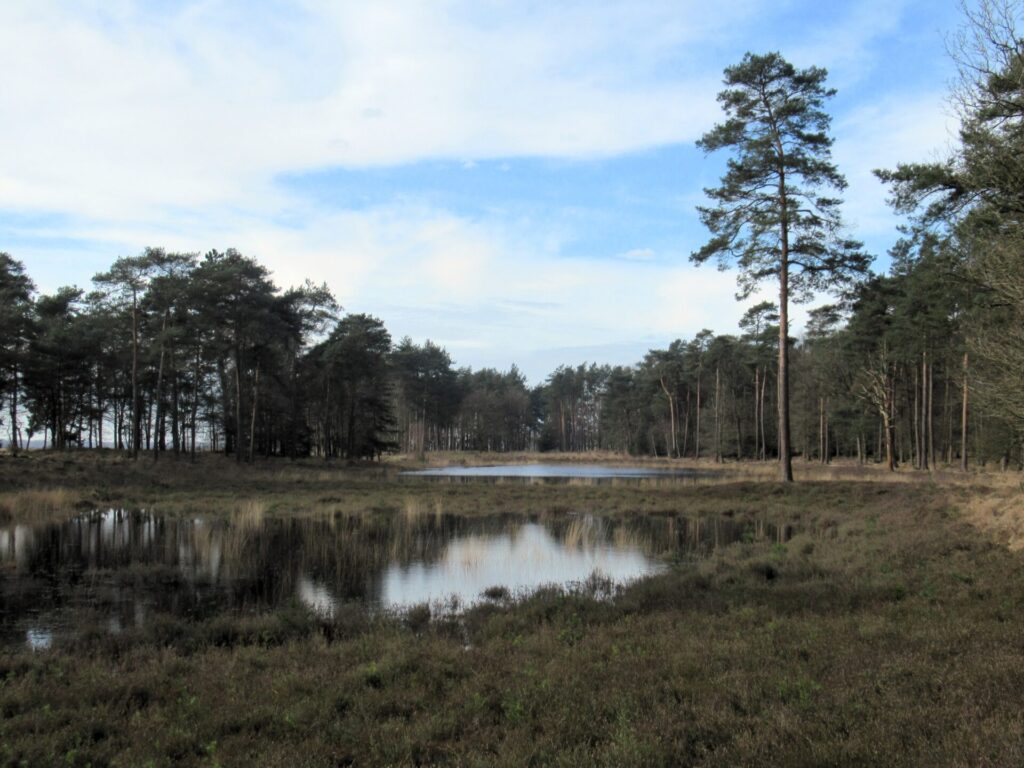
Last Sunday we first heard and then saw a raven in the top of one. The picture below isn’t great, but you can see how its neck bulges and its head leans forward when it makes its deep ‘cronking’ sound.
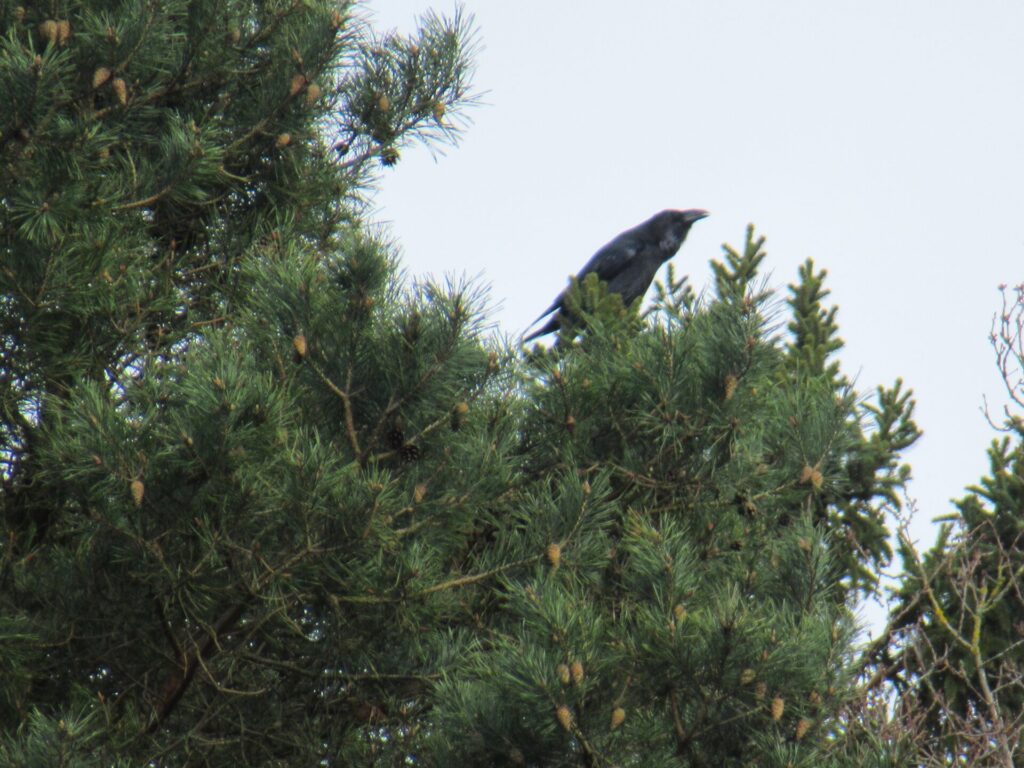
I’m thrilled whenever I see or hear one of these huge black birds. Ravens were nearly extinct here a century ago and I’m so glad they are back.
Our walk also took us to a sheep fold. The sheep were out with the shepherd and there weren’t any lambs yet.
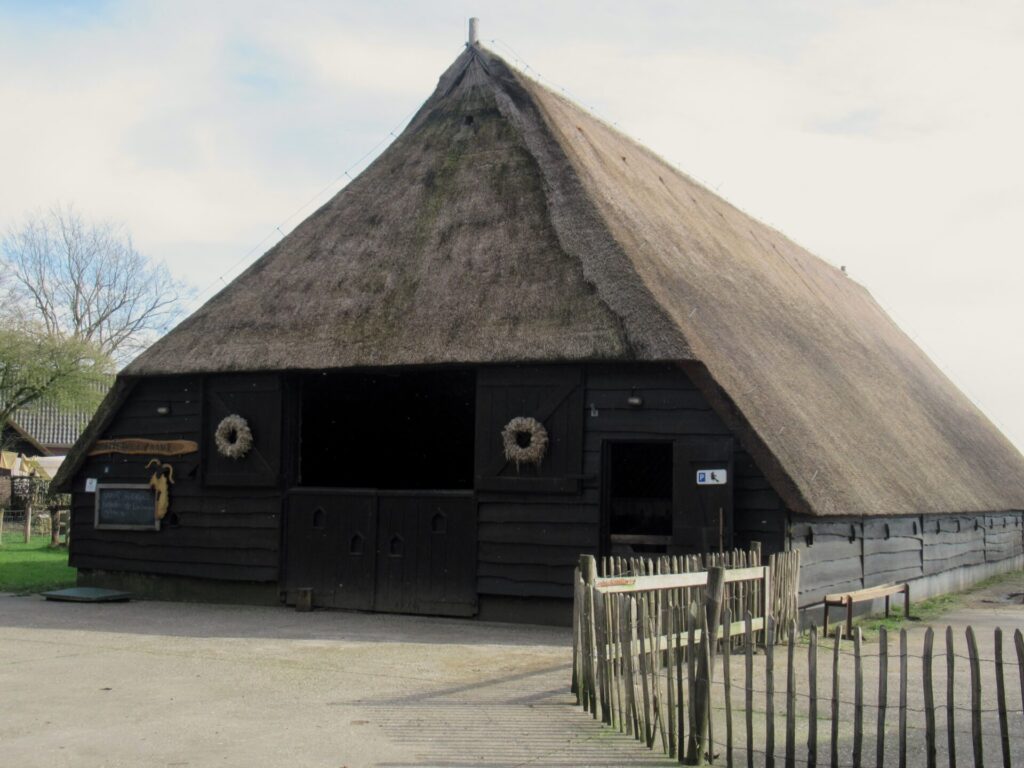
Ah well, another time. Did you notice the wreaths on the shutters in the picture above? They are made from wool from the flock. Aren’t they great?
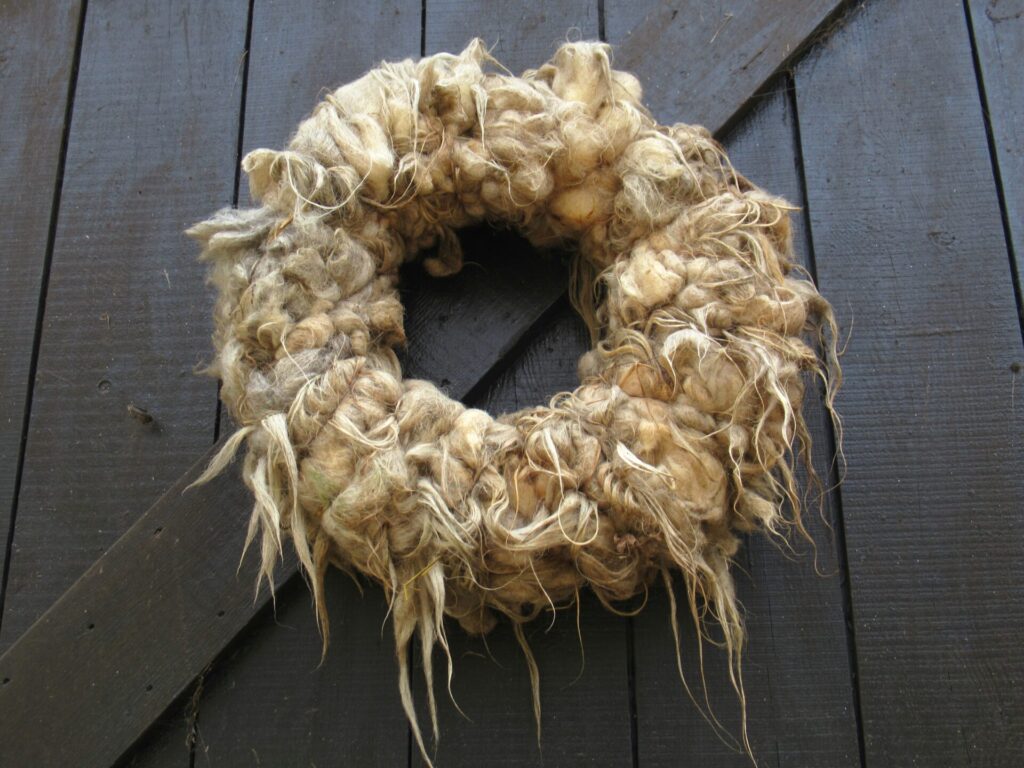
The Story of Ljot and Vigdis
I can decipher a Norwegian knitting pattern, but reading a novel would take me a year so I’m glad there are translations. The short novel by Nobel Prize winner Sigrid Undset I’ve read has two main characters: Ljot and Vigdis. The original title is Fortaellingen om Viga-Ljot og Vigdis, where both get equal weight. It’s interesting to see that the Dutch publisher left rapist Ljot out of the title Vigdis Gunnarsdochter. And even more interesting is how the English publisher reduced strong and independant woman Vigdis to Gunnar’s Daughter in their (probably his) choice of title.
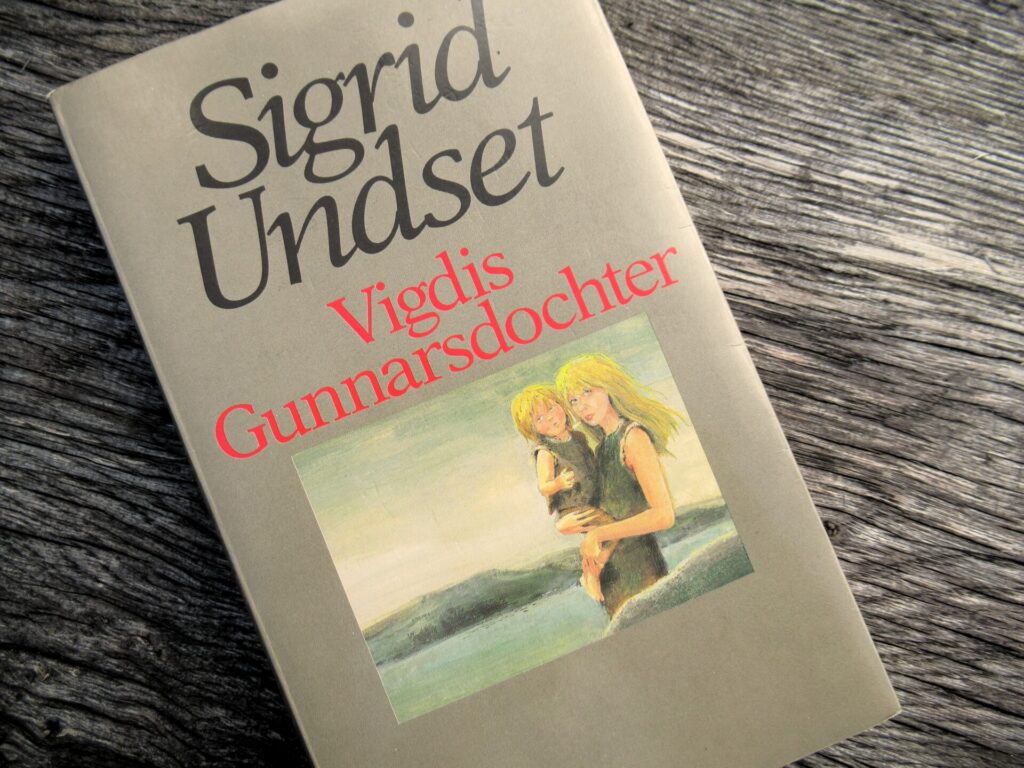
The story is set partly in Norway and partly in Iceland in the Middle Ages. At first glance it looks like a historical novel, but with themes like rape and other forms of violence, marriage problems and how children are affected by their parents’ traumas it could have been set in any place or age. What I liked about it is that nothing is black-and-white, and nobody is either all good or all bad.
Interesting for us, knitters and spinners, is how main character Vigdis is introduced: ‘By the hearth sat two women; one of them was spinning by the light of the fire; she was not very young and was darkly clad, but bright and fair of face. The other was but a young maid, who sat with her hands in her lap doing nothing.’
The young maid is Vigdis, and that she isn’t spinning immediately tells us that she is wealthy and probably spoilt. Spinning wasn’t a hobby back then, but essential for keeping people clad and warm.
Well, I’ll sign off now wishing you a good couple of weeks. Bye!
Links:
- The pattern of the Vinterkonglegenser isn’t available through Ravelry, but some info and other people’s projects can be found here.
- More about the knitting book the pattern comes from can be found in this blog post.
- Some (but not nearly all) other patterns in the book can be viewed here.
- Needles used: 2.5 and 3.0 mm (US 1½ and 2½ ).
- Yarn: Sandnes ‘Tynn Merinoull’.
Good luck with the house-moving!
Kristin Lavransdatter has been on my reading list for ages, this summer I really must get to it.
Interesting to read about pines and ravens. I live in a suburb not too far from Stockholm city center and I see ravens quite often. My friend who is a professor of zoology was amazed to see them when he visited us, ravens are shy birds. But I guess they like it here.
Thank you – I’ll be glad to have it behind us. Kristin has been on my list for a long time, too, and I will join you in finally reading it. And how amazing that you have ravens in your neighbourhood! They are still very rare here, and I only ever see them in out-of-the-way places. Enjoy the company of these magical creatures.
Fijne post weer Marijke.
Mooie trui is het geworden!
Dank je!